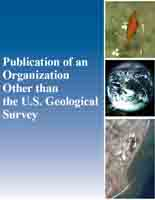Distribution and trends of endemic Hawaiian waterbirds, 1986–2023
Links
- More information: Publisher Index Page
- Download citation as: RIS | Dublin Core
Abstract
This study updates the status assessment of four endemic endangered Hawaiian waterbird species—ae‘o (Hawaiian stilt, Himantopus mexicanus knudseni), ‘alae ke‘oke‘o (Hawaiian coot, Fulica alai), ‘alae ‘ula (Hawaiian gallinule, Gallinula galeata sandvicensis), and koloa maoli (Hawaiian duck, Anas wyvilliana)—from 1986 to 2016 by incorporating new data from 2017–2023. State-space models, which account for biological and sampling variation, were fitted to estimate population sizes and trends from both core and non-core wetland survey sites. Long-term trends (1986–2023) largely show increasing populations for all four species, but recent short-term trajectories (2013–2023) are to a greater degree than previous analyses, predominantly negative, indicating accentuated declines in some island populations. Summer counts have declined relative to winter counts over the 38-year period, indicating potential changes in habitat availability and breeding patterns due to shifting rainfall patterns. Although negative trends were apparent in some non-core wetlands, our study underscores the importance of both core and non-core wetlands for waterbird populations.
Study Area
| Publication type | Report |
|---|---|
| Publication Subtype | State or Local Government Series |
| Title | Distribution and trends of endemic Hawaiian waterbirds, 1986–2023 |
| Series title | Technical Report |
| Series number | HCSU-113 |
| Year Published | 2024 |
| Language | English |
| Publisher | Hawai‘i Cooperative Studies Unit, University of Hawai‘i at Hilo |
| Contributing office(s) | Pacific Island Ecosystems Research Center |
| Description | iv, 36 p. |
| Country | United States |
| State | Hawaii |


